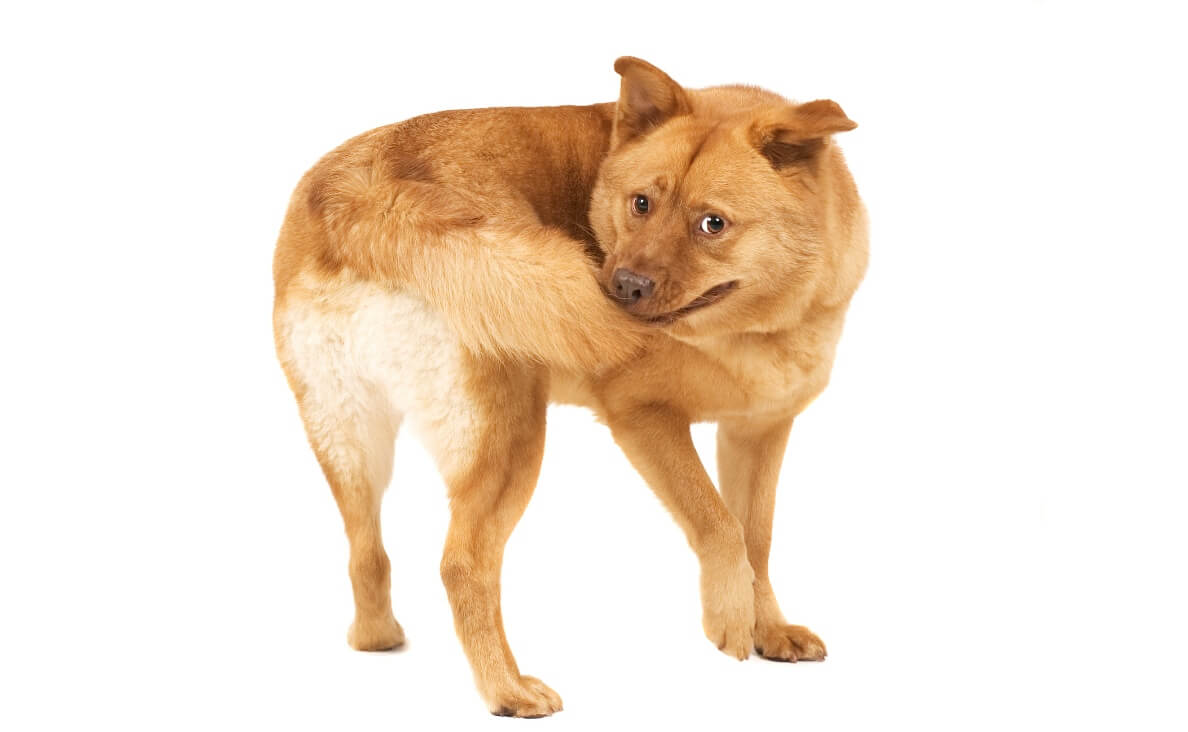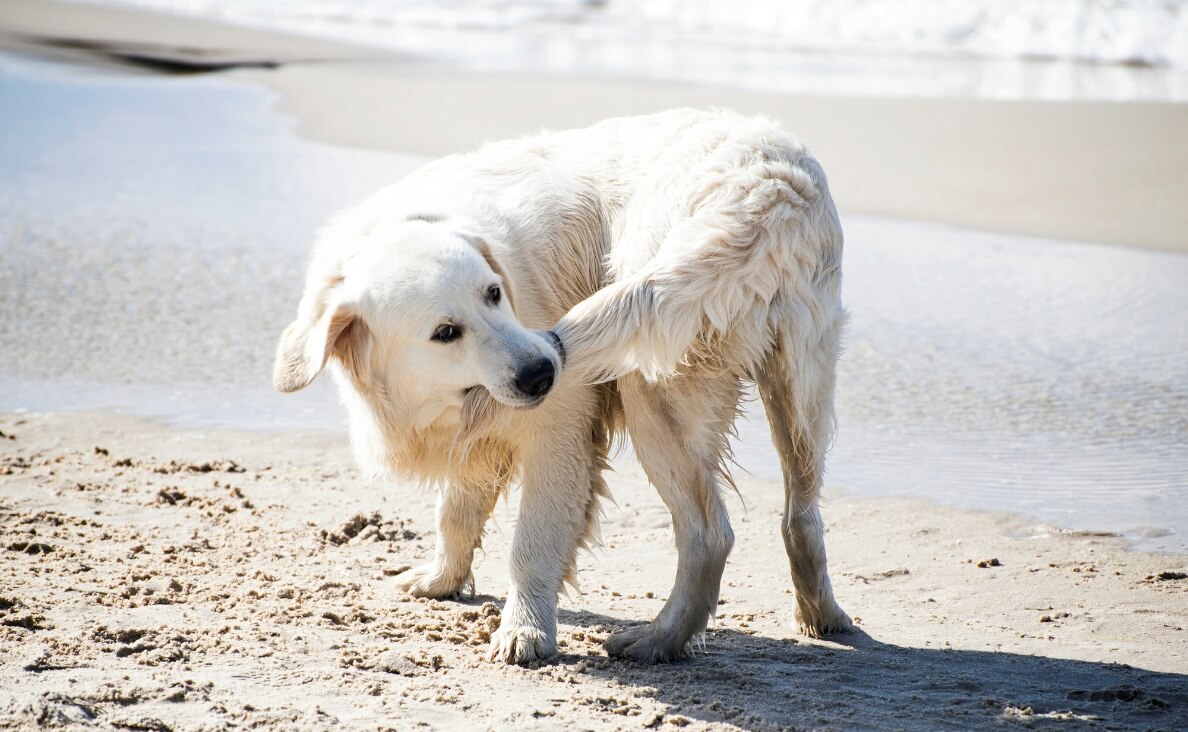
Observing a dog chasing its tail is a spectacle that ranges from amusing to bewildering for many pet owners. This behavior, often seen as a harmless quirk, can signify a variety of underlying reasons. From boredom to medical conditions, understanding why dogs chase their tails is essential for ensuring the health and well-being of these beloved pets. This article delves into the common reasons behind this behavior, shedding light on why dogs chase their tails and what actions owners should consider.
Boredom Can Be a Reason Dogs Chase Their Tails
One of the primary reasons dogs chase their tails is boredom. Like humans, dogs require mental and physical stimulation to stay healthy and happy. Without adequate exercise, play, and interaction, dogs can develop a range of behavioral issues, including tail chasing. This activity provides a self-entertaining way to pass the time, especially in environments lacking sufficient stimulation. Providing regular exercise, interactive toys, and engaging activities, like going to daycare regularly, can significantly reduce boredom-induced tail chasing.
Playfulness Can Be a Reasons Dogs Chase Their Tails
In many cases, dogs chase their tails simply because they find it fun. This behavior is particularly common in puppies and young dogs who are discovering their bodies and the environment around them. Playfulness drives them to engage in various activities, and tail chasing is just one of the entertaining games they invent. While this behavior often diminishes as dogs grow older and find other sources of amusement, it’s essential to ensure that playfulness doesn’t evolve into a compulsive habit.

Fleas and Ticks Might Make Dogs Want to Bite Their Tails
External parasites such as fleas and ticks can also be culprits behind why dogs chase their tails. These pests cause irritation and discomfort, leading dogs to chase and bite at their tails in an attempt to relieve the itchiness. Regularly checking your dog for fleas and ticks, alongside maintaining a preventive treatment plan, can help mitigate this issue. Ignoring such infestations can lead to more severe health problems, including infections and allergic reactions.
Dogs Might Seek Attention by Chasing Their Tails
Attention-seeking behavior is another common reason dogs chase their tails. Dogs are highly social animals that crave interaction with their human companions. When they feel neglected or desire more attention, they may resort to behaviors that previously garnered reactions from their owners. If tail chasing prompts laughter, interaction, or any form of engagement from their human friends, dogs might repeat this behavior to elicit the same response. Positive reinforcement of alternative behaviors can help shift their focus away from tail chasing.
Medical Conditions Might Cause Dogs to Chase Their Tails
Various medical conditions can lead to tail chasing in dogs. Issues such as neurological disorders, injuries, or even anal gland problems can cause discomfort or pain, prompting dogs to chase their tails in an attempt to address the sensation. It’s crucial for pet owners to observe their dogs closely and consult a veterinarian if the behavior persists or is accompanied by signs of distress. Early detection and treatment of these conditions can prevent further complications.

Dogs Chasing Their Tails Can Be Caused by Anxiety
Anxiety is a significant factor that can drive dogs to chase their tails. Stressful environments, separation anxiety, or changes in routine can induce anxiety in dogs, leading them to engage in repetitive behaviors such as tail chasing. This action can serve as a coping mechanism for the stress they experience. Providing a stable environment, along with appropriate behavioral training and, if necessary, consulting a professional for anxiety management strategies, can help alleviate this cause of tail chasing.
Canine Compulsive Disorder Can Cause Dogs to Chase Their Tails
Canine Compulsive Disorder (CCD) is a condition characterized by repetitive and compulsive behaviors, including tail chasing. This disorder can stem from a combination of genetic predisposition, environmental factors, and underlying stress or anxiety. Dogs with CCD often engage in their compulsive behaviors to the point of exhaustion or even harm. Recognizing and addressing CCD early is critical. Treatment may include behavioral therapy, environmental modifications, and, in some cases, medication under the guidance of a veterinary behaviorist.

Final Thoughts
Understanding why dogs chase their tails is crucial for pet owners seeking to ensure the well-being of their furry companions. This behavior can be a sign of boredom, playfulness, external parasites, attention-seeking, medical conditions, anxiety, or even Canine Compulsive Disorder. By observing their dogs and responding appropriately to their needs—whether through environmental enrichment, medical treatment, or behavioral training—owners can help mitigate or entirely prevent this behavior. Remember, a happy dog is one that feels engaged, healthy, and loved. Prioritizing your dog’s physical and mental health is the key to addressing not just tail chasing but a host of other behavioral issues as well.
This discussion has highlighted the multifaceted reasons behind why dogs chase their tails, emphasizing the importance of a proactive and informed approach to pet care. Whether your dog is chasing his or her tail out of boredom, for play, or due to underlying medical conditions, recognizing the context and frequency of this behavior is vital. Tail chasing, while often harmless and temporary, can sometimes signal a need for greater attention to your dog’s mental or physical health.
Do you have a dog that chases his or her tail? If so, why do you think they chase their tail? Please comment below…

 Ways Your Dog Asks for Help: Understanding Canine Communication
Ways Your Dog Asks for Help: Understanding Canine Communication 6 Reasons Your Dog Ignores Your Commands Outside
6 Reasons Your Dog Ignores Your Commands Outside Destructive Chewing: Why is My Dog Chewing Everything?
Destructive Chewing: Why is My Dog Chewing Everything? Do Dogs Like Music?
Do Dogs Like Music? 6 Ways to Channel Your Busy Dog’s Energy
6 Ways to Channel Your Busy Dog’s Energy






Leave a Reply